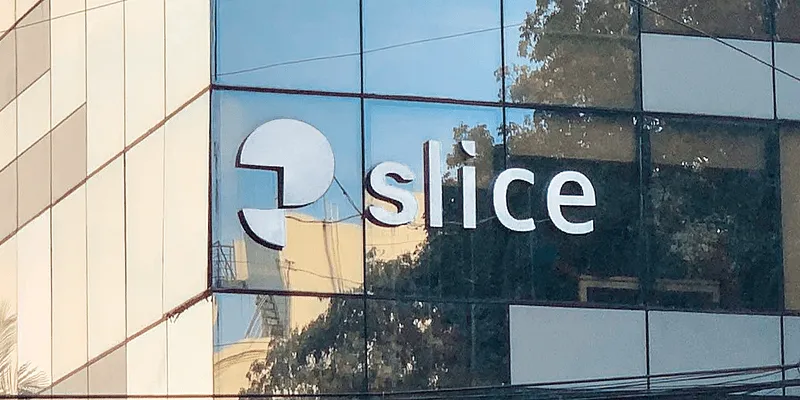Fintech Unicorn Slice’s losses widen despite a 300% increase in operating income.

Fintech Unicorn Slice’s losses widen despite a 300% increase in operating income.
Slice, a Bangalore-headquartered financial unicorn, saw losses jump 2X to Rs 267 crore in FY22 from Rs 103.87 crore in the previous year.
Losses widened from Rs 100 crore recorded in the previous financial year to Rs 253.67 crore on a consolidated basis, which also takes into account the earnings of the group’s NBFC subsidiary Quadrillion Finance Private Ltd.
At the same time, the company declared an operating income of Rs 182.53 crore, a huge increase from the Rs 37 crore it reported the previous year. On a consolidated basis, it increased by more than 300% to Rs 283 crore for the same fiscal.
This resulted in the fintech startup’s total consolidated revenue for FY22 reaching Rs 292.91 crore, an increase of 325% over Rs 68.85 crore in FY21.
Indian fintech companies are expanding rapidly and the sector is estimated to expand at a CAGR of 30%. The increase is driven by factors such as a rising middle class, increased use of the internet and mobile phones, and the government’s efforts to support digital payments.
But even after the high potential of Fintech companies in India, they are facing losses due to the rising expenses.

Rajan Bajaj founded Slice in 2016, a company that targets young people with little or no credit history and offers credit and debit cards (in partnership with Visa and SBM Bank).
The primary source of revenue for the digital lending and payments platform was fee and commission income, which rose to Rs 148.97 crore from Rs 42.14 crore in FY21 and included commission on loans, services and internet processing fees. Also, income from interest on loans, which was Rs 134.11 crore in FY22, increased by 424%.
The company’s standalone expenditure increased by about 240% to Rs 485.23 crore from Rs 143.6 crore in the previous financial year, according to RoC archive data. The total operating expenses were Rs 542.5 crore.
Slice spent Rs 209 crore on advertising and promotion, compared to Rs 6 crore in the previous year when examining the standalone spend.
At the same time, processing fees and customer onboarding costs also increased, from Rs 5 crore to Rs 20 crore. In all, the cost of employee benefits for the year increased from Rs 32.85 crore to Rs 98.93 crore in FY22, including wages and salaries.

Slice bought a 5% stake in a small financial bank.
Slice has secured a 5% investment in Indian bank North East Small Finance, which analysts say is a crucial milestone in the journey of the unicorn fintech start-up against mounting hurdles from the central bank that have already dogged many startups.
According to a regulatory filing, the Bangalore-headquartered startup raised $3.42 million for a 5% investment in the Guwahati-based small finance bank in September.
The investment comes at a time when the Reserve Bank of India (RBI) has severely restricted the growth of a number of fintech companies engaged in the card and loan industry by demanding strict compliance with new stringent rules.
It was not immediately clear how Slice, a $1.55 billion venture backed by Tiger Global, Insight Partners, Blume Ventures and Axis Bank, would benefit from acquiring a stake in a bank, although it admittedly is unusual and apparent. significant milestone for a start-up.
The second most populous country in the world is going through an exciting period right now as banks and fintech companies look for ways to improve their interactions. In recent years, as entrepreneurs sought to expand their businesses, Federal Bank and SBM Bank India have courted them as clients.
ICICI and HDFC, two gradually larger banks, have increased their discussions with younger companies. Recent investments have been made in Mintoak, a SaaS platform offering trading services in India and other markets, by HDFC, the largest private bank in India.

Why Indian Fintech industry is facing losses?
India’s consumer-facing fintech unicorns saw their losses widen even as they experienced strong revenue growth in fiscal 2022. To take advantage of a surge in demand for their goods and services, companies spent aggressively on advertising and promotions.
Data compiled by a source indicates that five of these unicorns – PhonePe, Acko, Cred, Groww and OneCard – that have filed their FY 22 results with the Ministry of Corporate Affairs (MCA) spent close to 1.6 times to 11 times more on advertising and promotion than they did a year earlier.
In FY 22 compared to FY 21, these companies’ losses increased by 1.2 to 5.5 times, with PhonePe reporting the biggest loss at Rs 2013 crore.
The founder and creative partner of skin-in-the-game marketing venture capital Spring Marketing Capital, Arun Iyer, explained the rationale behind expensive promotional spending. He argued that increasing awareness of a fintech company’s cutting-edge goods is the most important goal.
In his opinion, fintech companies must also concentrate on educating customers about their products in a rapidly evolving digital environment that they may find challenging to understand.
These unicorns also spent aggressively on salaries and other operating expenses during that time, but advertising and marketing spending increased the most overall. In FY 22, 24-60% of the companies’ total expenditure was related to advertising and marketing.
Financial unicorn Cred, managed by Kunal Shah and valued at over $6 billion, spent the most on marketing and advertising during the group’s year. According to the report, Cred spent Rs 976 crore in FY 22 compared to Rs 324 crore in FY 21.
The company’s promotional expenses were 2.5 times higher than its annual sales of Rs 393 crore.
Cred also spent more on advertising than PhonePe, which was recently valued at $12 billion after announcing a significant $1 billion funding round from international private equity and venture capital investors.
The unicorns in the set all showed significant revenue increases in FY22 compared to FY21. Groww recorded the highest revenue growth during the year, nearly 12 times, while PhonePe, which had a larger base in FY 21 than the other unicorns in the group, saw the lowest revenue growth at 133 percent.
Edited by Prakriti Arora
























